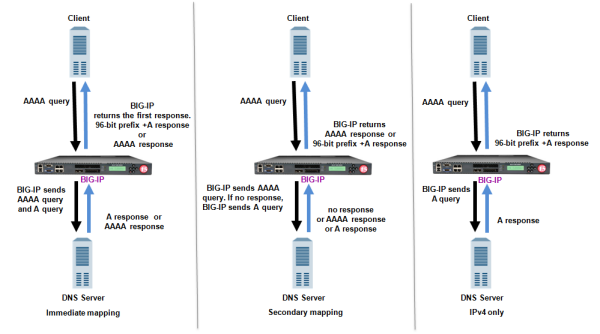Manual Chapter :
Configuring DNS64
Applies To:
Show Versions
BIG-IP LTM
- 13.1.5, 13.1.4, 13.1.3, 13.1.1, 13.1.0
BIG-IP DNS
- 13.1.5, 13.1.4, 13.1.3, 13.1.1, 13.1.0
Overview: Configuring DNS64
You can configure BIG-IP®
Local Traffic Manager™ (LTM®) and BIG-IP® DNS systems to handle IPv6-only client connection requests to IPv4-only servers on
your network by returning an AAAA record response to the client.
Note: When you are configuring DNS64, in addition to
the BIG-IP DNS license, the system requires both CGNAT and DNS services licenses.

Mapping IPv6 addresses to IPv4 addresses
Task summary
Creating a custom DNS profile
Before you start, make sure that you
have activated licenses for BIG-IP® DNS, and both the CGNAT and DNS
services.
You can create a custom DNS profile
to configure how the BIG-IP® system handles DNS queries.
Implementation result
You now have an implementation of DNS64 on the BIG-IP® system.





